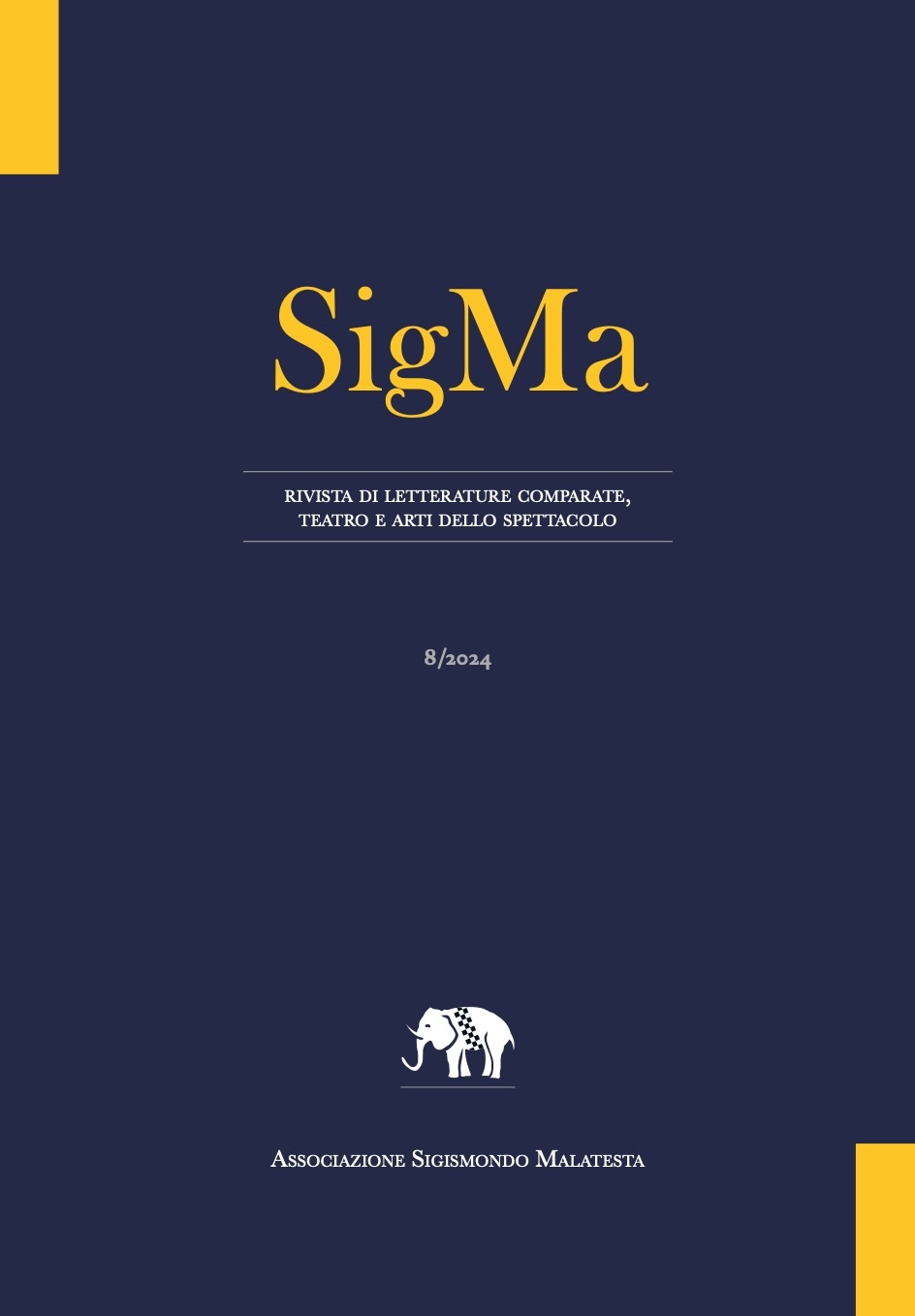Jacques Lecoq and the chorus: from stage to theatre pedagogy
DOI:
https://doi.org/10.6093/sigma.v0i8.11482Keywords:
Lecoq, chorus, tragedy, theatre pedagogyAbstract
How the chorus could act in classical tragedies was and still is a contentious issue. During the 20th century, there have been numerous attempts to re-stage classical texts with genuine archaeological re-enactments, in which special attention is paid to both the text and the performance. The INDA Foundation’s experience in Syracuse from 1914 to the present day is significant, where philological attempts turn out to be more than true reinventions, and the biggest problem to be tackled seems to be that of the chorus, its role and its stage movements. In Syracuse, different solutions have been found over the years to make the chorus act, and different artists and choreographers have been involved: from Dalcroze’s eurhythmics to acrobatic and contemporary dance in recent years, or the choice of dividing the chorus into half-choirs, entrusting each with a different function and mode of action. The solutions proposed for the chorus by Jacques Lecoq, a French mime and multifaceted artist, who worked in Italy between the 1950s and 1960s and choreographed the choruses of tragedies and comedies in various theatres, thanks to which he experimented with his idea of movement and pantomime, were interesting. Interesting solutions were adopted at the Piccolo Teatro in Milan, his first encounter with a tragic chorus, and his first experience in 1962 in Syracuse. His artistic and pedagogical research would later flow into his theatrical pedagogy and would be a fundamental element of training in his acting school, which is still active today.
Downloads
Downloads
Published
How to Cite
Issue
Section
License
SigMa Journal is an open access, online publication, with licence:
|
|
CCPL Creative Commons Attribution |
The author retains the copyright of his work whilst granting anyone the possibility “to reproduce, distribute, publicly communicate, publicly exhibit, display, perform and recite the work”, provided that the author and the title of the journal are cited correctly. When submitting the text for publication the author is furthermore required to declare that the contents and the structure of the work are original and that it does not by any means compromise the rights of third parties nor the obligations connected to the safeguard of the moral and economic rights of other authors or other right holders, both for texts, images, photographs, tables, as well as for other parts which compose the contribution. The author furthermore declares that he/she is conscious of the sanctions prescribed by the penal code and by the Italian Criminal and Special Laws for false documents and the use false documents, and that therefore Reti Medievali is not liable to responsibilities of any nature, civil, administrative or penal, and that the author agrees to indemnify and hold Reti Medievali harmless from all requests and claims by third parties.


